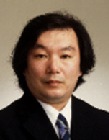 |
 |
Professor |
Assistant Professor |
- Formal language and automata;
- Term rewrite systems;
- Declarative languages;
- Formal semantics of languages;
- Computation mechanisms and modeling; and
- Discrete mathematics.
The research in this laboratory is divided into two parts:
The first part consists of the work that follows the research in the above areas. One of the most important goal of it is to provide the foundations for the education of language processing systems, programming languages, and formal language theory.
The second part is the creative study in some specific areas related to language processing systems. The research activities of this part are based on the voluntary work of each faculty member. Currently, we are working on
- Characterizations of language classes;
- Foundation and implementation of declarative programming languages, such as functional, logic and functional-logic programming;
- Operational semantics of declarative languages;
- Theory and implementation of XML processing languages;
- Parallel/Distributed computation systems, such as compiler design for vector/matrix parallel computer architecture;and
- Others related to language processing systems;
Functional languages based on reduction have several properties such as deterministic and lazy evaluation and higher order definitions, but they lack other useful properties such as partial data structure and logical variables. On contrary logic languages based on unification allow partial data structure and logical variables but lack deterministic and lazy evaluation as well as higher order definitions. From this point of view it seems natural to unify both languages into one paradigm in order to obtain a language, called a functional logic language, with more expressive power than both functional and logic languages. To develop an efficient operational semantics for such unified model is studied in this laboratory..
Theoretical aspects of narrowing, extension of the notion of narrowing to higher-order narrowing, and others are studied in this laboratory, since they are recognized as the most important mechanisms of computation, especially in functional-logic programming languages.
ML is widely used in real world nowadays, especially for data exchange via the Internet and for data store within Web services. Thus XML processing gains importance and then research to ensure its safety and robustness mathematically should be urged. For this purpose, a study of a declarative XML processing language from theoretical and practical aspects is undertaken in this laboratory. Its computational model is hedge rewriting, an extension of term rewriting. The current study is focused on pattern matching of regular hedge patterns against hedges because it is a key mechanism of declarative XML processing. Algorithms for efficient pattern matching and its implementation are studied in this laboratory.
The recent parallel/distributed computation environment requires the development of a new language model and its processing model/system for such an environment. To design new languages and language processing systems is the key work for the next development of the computer society, and to study for establishing such models and implementing as real systems for evaluation is considered one of the most important subjects for this laboratory. Hence the members of this laboratory study on the topics in this field.
The education on the subjects related to languages and language processing systems is also the important mission of this laboratory. The courses for undergraduate students given by the members of this laboratory include Computer Literacy II, Advanced Algorithm, Automata and Languages, Language Processing Systems, and Operating Systems. Those for graduate program include Advanced Automata and Languages, Complexity Theory, and Declarative Processing.
| The news in Language Processing systems Lab in this year is that Professor Hamada
was promoted as an associate professor and moved to Image Processing Lab on April 1,
2009. The Language Processing Lab thanks to him for his contributions to this lab and
expects his success in new environment and his big contributions in wide area. The research and education activities in this laboratory focus on the theoretical and practical aspects related to formal languages, language processing, and language processing systems. In particular, our work covers the following areas. |
Referred Proceeding Papers
| [taro-01:2009] |
Taro Suzuki and Satoshi Okui. Hedge Pattern Partial Derivative. In Editor
Sebastian Maneth, editor, 14th International Conference on Implementation
and Application of Automata, CIAA 2009, Lecture Notes in Computer Science
Vol. 5642, pages 125–134. Springer Verlag, July 2009. |
| We propose hedge pattern partial derivatives, an extension of Antimirov’s partial derivatives,
in order to give an operational semantics of pattern matching of regular hedge expression
patterns, which is crucial in XML processing. We show that correct and small
matching automata can be constructed from hedge pattern partial derivatives. |
Unrefereed Papers
| [okawa-01:2009] |
S. Watanabe and S. Okawa. Pattern Generation on Two Dimensional
Cellular Array. RIMS Kokyuroku, (1655):36–46, 2009. |
| On usual pattern generations, as the template of suitable size for a given screen is
sellected and the pattern is displayed through the template on it, several number of
templates are prepared for each figure. In this paper, we investigate the method to
display patterns on the screen of any size without preparing such templates. We define
two dimensional patterns as equivalence classes defined by movings and scaling. Then,
we define the pattern generation as to display a figure belonging to the pattern with
appropriate size and position on a given screen which is discretised and considered
as a cellular space. Then, we give cellular automata, which generaltes a square and a
isosceles triangle on a screen of size m × n for any m and n as examples. |
|
| [okawa-02:2009] |
S. Watanabe and S. Okawa. Pattern Generation on Two Dimensional
Cellular Array. In 8th Forum on Information Technology 2009, pages 301–304,
Sept. 2009. |
| [taro-02:2009] |
Taro Suzuki and Jun’ya Terazono. Design of XML formats for lunar and
planetary exploration data (in Japanese). In 6th IPSJ tohoku workshop, pages
09–6–A3–5, 1–8, March 2010. |
| We propose XPEF(XML-based Planetary Exploration data format) in order to facilitate
versatility of data and ease of use for researchers in the lunar and planetary science
field. XPEF is an archive that contains data obtained from lunar and planetary explorer
and from data analysis, together with XML documents providing overall information
of the archive, relationship among XML files and data files, header information on data
files. We determined data format of XML formats for header information from the data
obtained from Clementine, a lunar explorer launched by NASA in order to get necessary
information for analysis of planetary exploration data. |
|
| [taro-03:2009] |
Yuuya Shibata and Taro Suzuki. Algorithm for XML transformation
based on a matching automaton excluding back-track (in Japanese). In The
78th workshop on Programming SIG, IPSJ, pages 1–13, March 2010.
We design an algorithm for XML transformation based on hedge rewriting systems |
| We design an algorithm for XML transformation based on hedge rewriting systems.
This algorithm consists of two parts: 1)the algorithm that transforms a hedge rewriting system into a matching automaton taking account of priorities and 2)the algorithm for
efficient operation of the matching automaton in order to perform rewriting of hedges.
The algorithm 1 genetrates a deterministic matching automaton for hedge rewriting
system based on the method proposed by Nedja, which generates a matching automaton
that excludes back-track from a given term rewriting system. In pattern matching
of hedges, new methods for excluding back-track are needed because the length of
a sequence substituted for variables is not clear. Therefore, we explain methods for
excluding back-track. The algorithm 2 is based on the adaptive strategy, variant of a
lazy evaluation strategy used in lazy functional languages such as Haskell. In adopting
the adaptive strategy, XML transformation based on lazy evaluation is possible. |
Academic Activities
| [okawa-03:2009] |
S. Okawa, 2009. Reviewer of IEICE Transaction |
| [okawa-04:2009] |
S. Okawa, 2009. Reviewer of proposals for JST Fund |
| [taro-05:2009] |
Taro Suzuki, 2009. JSSST member |
| [taro-06:2009] |
Taro Suzuki, 2008. IPSJ member |
| [taro-07:2009] |
Taro Suzuki, 2009. Local organization of FAN 2009 held in the University of Aizu on September 17 and 18, 2009, Japan Society for Fuzzy Theory and Intelligent Informatics |
| [taro-08:2009] |
Taro Suzuki, 2009. Reviewer of Journal of Algorithms in Cognition, Informatics and Logic |
Ph.D, Master and Graduation Theses
| [okawa-05:2009] |
Masaru Takano. A New Solution of the Early Bird Problem on a Two-
Dimensional Cellular Automaton, University of Aizu, 2010. Thesis Advisor: S. Okawa |
| [okawa-05:2009] |
Saze Yuuki. The Isosceles Triangle pattern Generation by Two-
Dimensional Cellular Automata, University of Aizu, 2010. Thesis Advisor: S. Okawa |
| [taro-09:2009] |
Yushi Ishizawa. Graduation Thesis: Development of Squeak Programming
Environment for Lego Mindstorms NXT, University of Aizu, 2009. Thesis Advisor: Taro Suzuki |
| [taro-10:2009] |
Shunsuke Kaneko. Graduation Thesis: Sound Module Control of Lego
Mindstorms NXT by Squeak, University of Aizu, 2009. Thesis Advisor: Taro Suzuki |
| [taro-11:2009] |
Takahiro Gido. Graduation Thesis: Motor Control of Lego Mindstorms
NXT by Squeak, University of Aizu, 2009. Thesis Advisor: Taro Suzuki |
| [taro-12:2009] |
Tomoya Koishizawa. Graduation Thesis: Sensor Control of Lego Mindstorms
NXT by Squeak, University of Aizu, 2009. Thesis Advisor: Taro Suzuki |
| [taro-13:2009] |
KYuuya Shibata. Master Thesis: An efficient pattern matching algorithm
for XML transformation, University of Aizu, 2009. Thesis Advisor: Taro Suzuki |

2011 THE UNIVERSITY OF AIZU ALL RIGHTS RESERVED